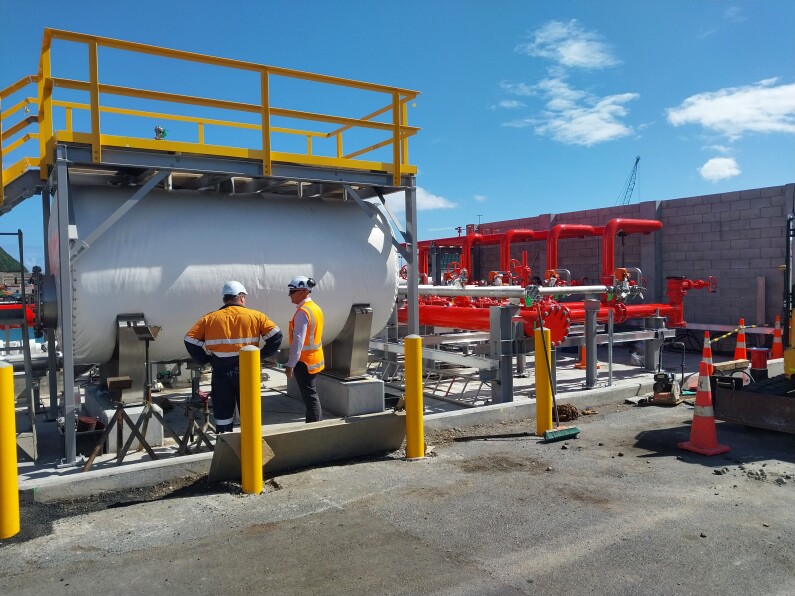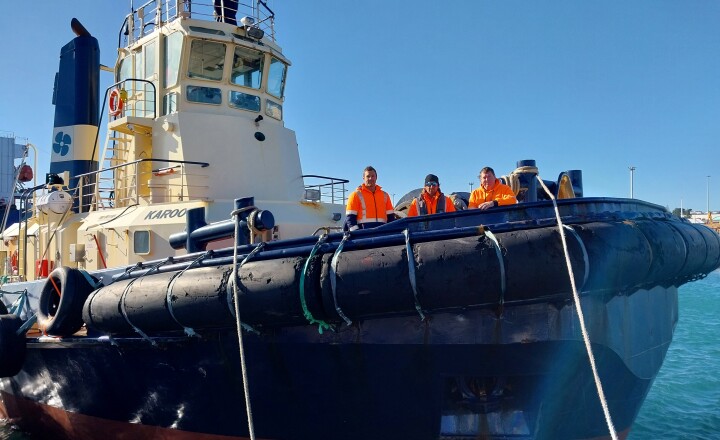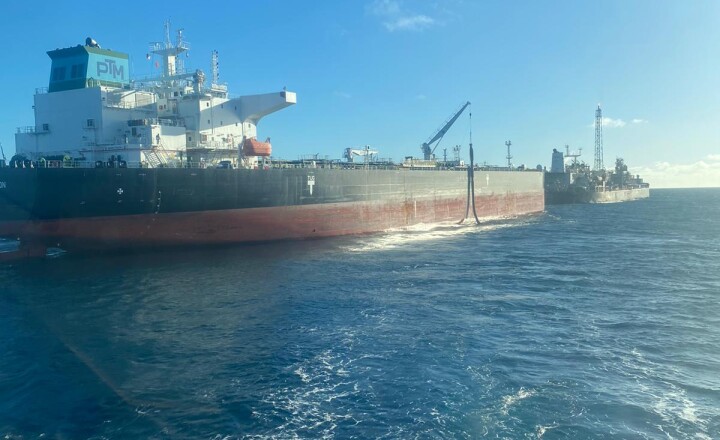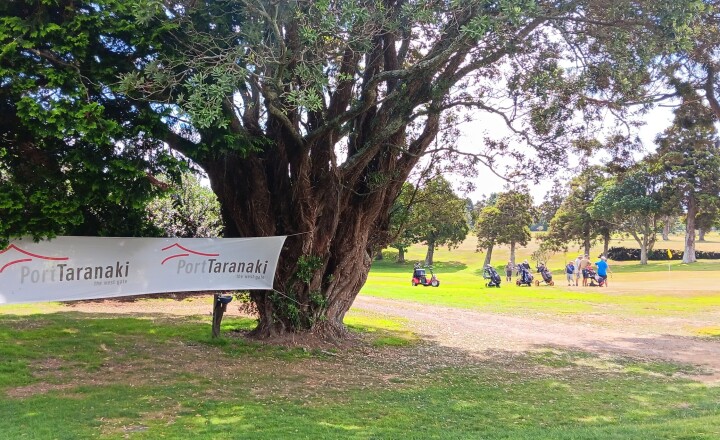
A multimillion-dollar upgrade and replacement of the firewater system on Port Taranaki’s Newton King Tanker Terminal (NKTT) is near completion and will help protect and future-proof the energy products wharf for decades to come.
The $16 million freshwater firewater system, which includes new pipelines, monitors (water cannons), valves, pumps, dual electronic controls, a new firefighting foam system, and a refurbished freshwater tank, is in its final trials and will be fully operational on 31 December.
The system upgrade brings it up-to-date with International Safety Guide for Oil Tankers and Terminals (ISGOTT) safety standards, and meets incoming Environmental Protection Authority (EPA) firefighting foam regulations. Specifically, there will be storage of four times the amount of firewater required, and it will increase the port’s firefighting capability.
“This has been a huge project for Port Taranaki – our largest capital investment since we commissioned our tug Kīnaki – and we’re thrilled with the result,” Port Taranaki chief executive Simon Craddock said.
“While it’s a significant investment in something we hope we never have to use, it’s an incredibly important and necessary asset for the safety of the port and the people who work here. It gives us and our customers assurance that our wharf and their assets – their pipelines on the NKTT, loading arms and the tankers that come to port – will be protected as best as possible should a fire occur.
“It also prepares our terminal for possible future changes in the energy products that will be moved across the wharf,” Mr Craddock said.
“It has truly been a Team Taranaki effort, involving more than 100 people from multiple contractors and the port. The co-ordination between the various parties has been fantastic and enabled the project to come in on time and on budget, and we thank them for all their hard work.”
With the existing saltwater firewater system nearing the end of its life, in 2020 the decision was made to replace it with a state-of-the-art freshwater design. Following concept design and detailed plan work, and off-site fabrication of piping and other components, the project began on-site in August this year.
An unused water tank, which is on Port Taranaki land outside the operational area on Ngāmotu Rd, was refurbished and upgraded, and existing piping that takes the water from the tank to the port was able to be reused. Two new pumps and an electronic control centre were installed on the tank site.
“The tank holds 60 million litres, which equates to four times the four hours of firewater we’re required to have available at all times,” Port Taranaki general manager infrastructure John Maxwell said.
The tank’s water supply comes from the town supply, but to date has been filled with stormwater, which is collected on the site and then pumped into the tank.
“It’s a good way to reuse a natural resource and not rely solely on the town supply,” Mr Maxwell said. “The tank is connected to the town supply but this would only be used as a back-up.”
Mr Maxwell said a key advantage of a freshwater system was that it required less maintenance and it helped extend the life of the piping, valves, and monitors, and the customers’ assets on the NKTT.
“While there is an easy and infinite source of salt water right under the wharves, salt water is more corrosive. We carry out monthly tests of the firefighting system and, currently, we then have to push fresh water through to clean it out and spray down the piping on the NKTT to remove the salt.
“With the new freshwater system, this won’t be required and, coupled with the corrosion protection on all the pipes, valves and monitors, we expect the system to last a lot longer than its 25-year design life,” Mr Maxwell said.
New piping and five monitor towers have been installed along the length of the NKTT, enabling water and foam coverage of the full wharf and the NKTT control room. The system will also provide boundary cooling of vessels in the event of a fire, complementing the vessels’ own firefighting systems and the assistance of the port’s tug fleet.
The electronic system is controlled by the operators in the NKTT, with the second control room at the water tank site able to be accessed if needed.
“It’s been a very successful project,” Mr Maxwell said.
“As is always the case when carrying out port projects, we’ve had to work around shipping schedules, shipping changes, and weather, which has had its challenges.
“But all of the contractors – Plant and Platform Engineering, who designed the system, JLE, Energyworks, Fulton Hogan, and Pace Engineering – have really pulled together and worked really well with us and each other to ensure the project is completed and can go live on 31 December.
“Due to us needing to excavate for parts of the project, our staff and contractors also had a real insight to the area’s history and meaning through a cultural induction with Ngāti Te Whiti before work began. This really helped build that sense of collaboration from the start,” Mr Maxwell said.
Once the new system is operational on 31 December, the project team will begin the removal of piping and componentry from the decommissioned firewater system.


